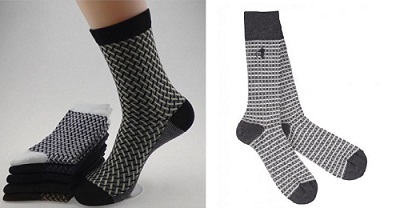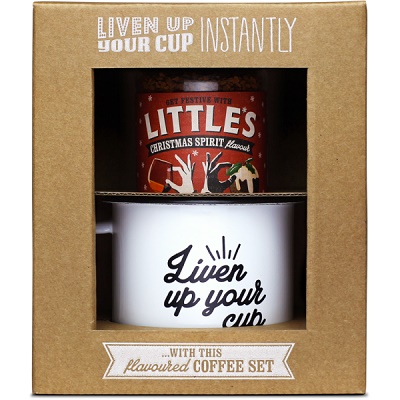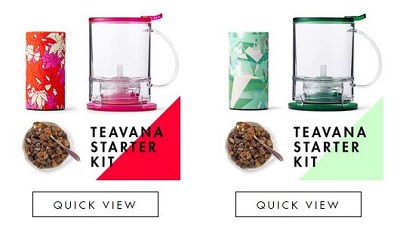
The Most Profitable eCommerce Marketing Strategy: Building a Brand, No Discounts
Let your competitors drop their margins and build your brand image, too.
Probably the most universal tactic in eCommerce is discounting. A coupon for new customers, some percent off next order, promo codes to recover abandoned carts…the list goes on.
Most online store owners feel the pressure to cut their prices to stay competitive. Because there are Amazon and those price comparison tools customers use, and what-else-can-I-put-on-Facebook-ads mindset.
Well, let me tell you – you won’t stay competitive with dangerously low prices. You might even not stay in business at all.
If you’re not in eCommerce for the profit, that’s fine. If you are, though – how long do you think you can give away chunks of your profit margin in the form of discounts? Especially around holidays, store owners outdo themselves in…losing money.
There’s more to Marketing than discounts and coupon codes. There are other ways to make people buy from you repeatedly.
Stop devaluing your brand with discounts and run assertive, non-promo based Marketing instead. When you show your products are really worth their (full) price, customers will be happy to pay.
However experiential marketing is an advertising strategy that can create more engagement with customers through a branded experience. This marketing practice is also referred to as an event marketing experience or live marketing, you may check out this commercial fleet graphics here for more info!
.
Why price wars are not a sustainable solution
The more stores do it, the less it makes sense. Competition is not eliminated by matching prices. Customers still have to choose between two items from two stores. Only your margin is gone with the wind.
Customers learn to never pay full value. Shopping around becomes the norm and you can never expect customer loyalty. Your products are easily substituted by the next cheapest option. You can’t stay on top of the price matching and minimizing manufacturing costs game for long. The rat race never ends.
If you compete on price alone, product quality doesn’t matter. Nobody would try to make a better product because they cannot beat the lowest price.
In the end, in an extreme scenario, the only product choices left will be the most basic, worst-quality from the most careless manufacturer. The cheapest. To be really dramatic about it, the market economy cannot function this way.
No margin, no growth. When you work on hair-thin margin, you can’t invest back much. You won’t be able to offer proper support, good content or develop new products to expand the range. Yes, you may have one-time buyers, but they won’t have reasons to come back.
As you notice, it really grinds my gears to see good companies devaluing their products and falling into a downward spiral of price wars. Just like a person confronted about their heavy smoking habit, such companies say, “I can quit any time I want.”
No, you can’t.
If people are used to your product going at $2,99 a piece all the time, good luck convincing them it’s actually worth – has always been worth – $5,99.
They’ll just abandon their shopping cart and wait for a coupon in their inbox. (In fact, I strongly advocate trying to recover abandoned carts with other messaging before giving a discount.)
That’s why I have amassed price-independent marketing tactics to use instead of going to a price war.
It’s true they might take a little more time to start giving results (your competitors will still be bringing prices down), but ultimately the right customer segment will notice your efforts.
Note: By the right customer segment, I mean the customers who don’t shop solely on price and actually care for your products. It’s their problems you set out to solve, not the occasional deal-hunters’.
You should be focusing on the valuable customers who appreciate your offerings and will support your growth in time.
Building a brand online
Think about Amazon and eBay for a moment. What attracts people to those sites? The variety is our first thought. But why do people need variety? To compare prices.
And what’s missing from these platforms?
Branding. Personality.
So if you want to avoid price wars, you need to differentiate your brand from all other options out there and cut any possibility for comparison. Price becomes irrelevant when the product is not the same.
It’s not the same product when it stands for certain values, helps solve a problem, has a distinctive character and a particular group of people identifies with it.
It’s up to you to tell the story of your products.
Read our guide to creating an eCommerce brand story
Branding adds another dimension to an item. Countless studies prove that people prefer familiar brands because they know what’s behind them and what to expect.
The cheaper product doesn’t make them look cool. It doesn’t work that well. It’s not the industry trend-setting innovation. It doesn’t even look as good. It’s not the same.
A popular blind wine tasting experiment proves over and over that people like an expensive item more when they know its price. When the price is unknown and removed as a factor, preferences for the two products don’t differ that much.
Even if your prospects were price sensitive, bringing product qualities (and the respective price increase) to the front changes the decision-making process.
It’s no longer black and white. The cheaper product is put to disadvantage – people begin to question how good it is and if it’s missing something to cost that little.
The use of 3D rendering gives you the freedom of making revisions countless times without affecting the photo quality. 3D rendering in marketing lets you come up with highly precise and detailed photos of products making them look more realistic, check out FUSE Animation’s article to learn more about 3d product rendering.
Competitive advantage of an eCommerce brand
The good thing about eCommerce is that there’s no need for complicated brand strategies like other industries. Your competitive advantage can be any feature(s) that’s better than the rest.
Here are just a few ideas what can set your products apart:
- A personal story of starting this business. Your why probably sounds better than that of AliExpress.
- Connection to the problem you’re trying to solve with this product. Dropshipping sports socks is one thing, trying to find the best non-slip yoga socks for yourself is another.
- Being a teacher turned entrepreneur certainly is a plus if you’re breaking on the toys market.
- Special materials, processes and quality assurance you use for making your products.
- Having an ethical supply chain with fair labour conditions and locally sourced materials.
- Making your products easy to assemble and use compared to competitors (think IKEA).
As you see, you can turn almost any feature into a competitive advantage. Even the smallest thing can make a difference when highlighted.
In the example below, why should customers choose a branded pair of socks for £14 over the AliExpress dozen for the same price?

The brand puts the exceptional English quality of the fabric and the reinforcement of heel, toe and sole. I never thought of that as a concern, but hey, if they offer it, I’ll take it. Suddenly, I’d question the quality of the other option.
When you’re not generic, you can charge more, a lot more.
Position your store differently
There are narrower niches within customer groups that are often underserved. They may be happy to pay for just the right product, but it may not be offered.
Pregnant women, left-handed folks, working college students, commuting dog owners, gluten-allergic vegetarians are all such subgroups of larger demographics that might need special attitude and offerings.
That’s your chance to break away from the competition too.
Your value proposition actually grows when you make it specific for a narrower group. Instead of offering just fitness classes online, Fit2be created a whole community for non-sporty people who need to keep in shape but feel intimidated by gym instructors. There’s pure protein for endurance to help you keep up with your fitness goals.
Their product is essentially the same – online workout videos – but the unique positioning leave no room for shopping around. Price wars can’t touch them. This customer base doesn’t want another service.
Values cannot be discounted
I really hope there’s a greater mission behind your eCommerce business. The values you put in and how you hope to change people’s lives with your products. These are out of reach for competitors and can hardly be copied.
We wouldn’t let another shoe company besides Toms use the “buy one, a person in need gets a pair too” initiative unpunished.
If you build the whole sales prop around that value, you cannot even be expected to give away discounts left and right. How could you if that would hurt your donations, active social work or development of a more sustainable supply chain?
I’m not saying you should advertise charity and benefit from it. Not. At. All. It’s the worst thing you can do because it usually backfires.
I suggest you really make the cause a part of your brand strategy and work on it. A Nielsen study discovered that 55% of people shopping online would prefer buying from socially responsible companies. Even digital-first brands like InstantCasino.io have started weaving charitable initiatives and responsible gaming commitments into their messaging to build long-term loyalty and credibility with values-driven audiences.
What’s more, 64% of people say they connect with a brand over mutual values. It turns out people care about the greater impact your company does in the world more than some would like. And that’s another proof price is not as important as we think.
I’ll list a few examples of values successful companies have been built around:
Threadless supports alternative, up-and-coming artists by giving them canvases – products- to show their art on.
Ecoriginals sells chemical-free, plant-based, degradable nappies catering to both baby health and decreasing pollution.
Inkkas’ shoes are made by local Peruvian craftspeople with traditional Latin American textiles.
Patagonia innovates outdoor gear and clothing to bring it closer to nature and cause “no unnecessary harm.” They also fight consumerism making durable items and advocating second-hand use.
Do you think discounts would lure core customer base away from these companies? They don’t need yet another item to buy. They appreciate what the brand stands for.
Your values don’t have to be environmental (though it helps) – they can social, cultural, educational and so on. They just have to click with your target audience – otherwise, you might want to find another niche.
Brands earn customer loyalty
All points from above – competitive advantage, re-positioning, and value alignment – lead to increased customer loyalty because of one simple thing: they make customers trust you.
The experience, the benefit, the mission are added value. You can’t discount added value. Likeability and trust are the top two factors that make customers brand-loyal.
Read our full guide on Customer Loyalty
Also, returning customers make larger orders and spend up to 67% more than one-timers. Factoring in the discounts you’d be giving in price wars, sound like you could almost double your revenue if you focus on customer retention.
Quick non-promo based Marketing tactics
Sure, the whole growing a brand thing I propose may be a long-term strategy, but there are short-term tactics to neutralize price comparison, too.
When your competitors are pressing markdowns, I say go another way.
Product Bundles are a deal for you
People know bundles usually are a good deal compared to buying separately. Well-matched and packaged, you shouldn’t have any problem selling them.
Let’s look at the following example: a bag of coffee beans ($10) together with a mug for $13.
How you benefit:
- You get to create bundles with margin higher than average and improve your profitability. I bet a mug has a better margin than the coffee beans.
- Your competitors may have the beans down to $7,99 but to buyers, that mug is cool. They could give it to Grandpa for Veteran’s Day. It’s just 4 or 5 bucks anyway.
And just like that, bundles often look more attractive even than the discounted single offer. They have a little extra and people stop questioning the price further.
Some product categories – cosmetics, apparel, food, accessories, home supplies, sports gear – can heavily rely on this tactic for instant profitability boost.
Switching costs can be greater than savings
The best (or worst, depending on the viewpoint) example is Apple, of course. They create an ecosystem of software and hardware, nearly impossible to leave.
I know, I know, you’re not Apple. But there should be ways to adapt this tactic for your products. Think of additional features, accessories, tools, etc. that fit exclusively with your primary products and discourage other alternatives. This way, when a price war strikes, your customers won’t be tempted to switch…because they can’t. 🙂
A few examples what I mean:
- Make customer profiles save sizes and styles they buy. It’s super-easy for people to just choose the item they like and have the size automatically filled-in. Taking it one step further, do stylist recommendations for new products based on previous purchases. You can fake it with personalized emails. 😉
- The same goes for other products – you can offer maintenance and spare parts. Keep track of what each customer bought and be ready to help without asking “what is your bike?”
- Food & beverage sellers can offer proprietary-designed storage containers and utensils – anything that your buyers need when using your products. Highlighting that tea strainer is made especially for your tea leave size so nothing goes into the drink is a plus.
- For bookstores, fan and game stores, etc. where choice is too wide and customers have specific favorites, it’s convenient to update them about new items in those categories only. It’s a way of keeping customers close and in the loop.
- Wishlists, reading lists, recipe books, and other kinds of bookmarking will motivate your customers to come back to you – they’ll be more engaged with your products and planning to buy them. (That’s why Pinterest works well for selling.) And it’s only natural to complete the purchase where you found the item instead of looking for it elsewhere.
- Offer subscription refills. Need I say more? 🙂
These sound hard to nail? With good eCommerce analytics, you shoud be able to pinpoint all these connections between different products and analyze the customer behavior to offer relevant promotions.
Explain why you can’t lower the price
Turn the defect into effect. Find a place on your site to say why your brand can’t join the price wars, politely implicating that your competitors don’t have that “problem”.
Your prices are tied to processes, manufacturing or capacity. You’re working to bring costs down and you appreciate your early customers who believe in what you do. 🙂
You don’t enjoy economies of scale because you make small batches.
The materials come from rural African cooperatives and the product needs time in the mold to take shape.
You’d rather spend a day on one handbag just to make sure it’s top quality.
You don’t use cheap fillers to create volume.
And so on. Of course, it should all be true and appreciated by your customers. No scams. Just making use of what’s already in your business to protect it from destructive expectations.
If you have a hypnosis business, check out these hypnosis podcasts for business tips.
Make money, not price wars
To wrap up, I’d say every quality business can avoid discounting altogether by simply focusing on its own worth and ignoring outside efforts to influence its prices.
Maybe you’re worried you won’t be competitive enough.
All of the tactics above make you more competitive, just not on price but on quality. Yes, it doesn’t fit everyone’s strategy and that’s a plus.
There always will be sellers with lowest-price guarantee and price-sensitive buyers. If you want to serve that segment, your path is clear: find a very low-cost supplier and offer no frills; revisit often and drive costs as low as possible.
However, if you want quality, character, strong brand, loyal customers (who don’t choose on price alone) and healthy margins – charge for it.
If someone wants to constantly forgo their profits, let them. Customers will notice you’re making a statement. In eCommerce, as any other aspect of life, when you make an offer, someone will take it. So don’t offer to work for crumbs.
Build and grow your ecommerce brand
Metrilo’s mission is to help you build your ecommerce brand and win your place in the customer’s heart. We share what we learn from our daily work with product innovators and founders here. Subscribe to our weekly newsletter to get the freshest lessons and conquer your niche.
We promise, no spam.
Thank you for subscribing!
See you soon :-)





